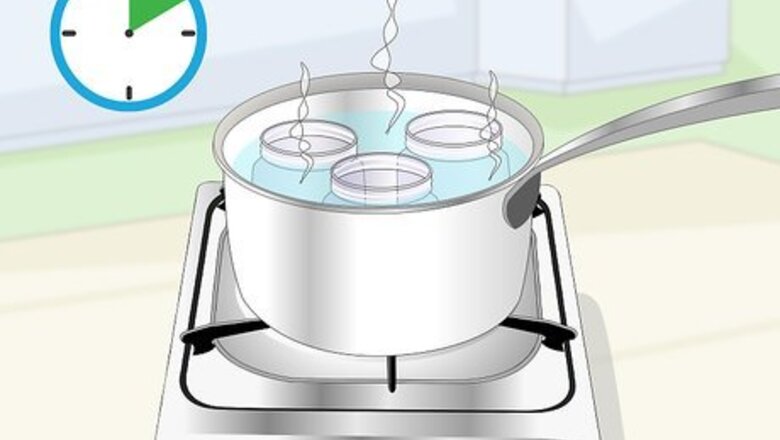
views
Preparing the Jars and Making the Brine
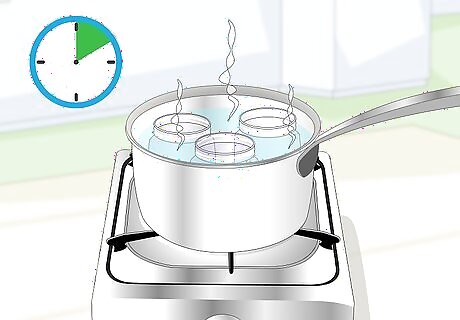
Sterilize the jars and keep them warm. Either run three clean pint jars through the dishwasher or boil the jars for 10 minutes. If you choose to boil them, fill a large pot with water. Once you've sterilized the jars in the pot, turn off the water, so the jars stay warm. If you use the dishwasher to sterilize the jars, use them as soon as they're done and while they're still hot. Or, alternatively, place them in a warm oven until you're ready to fill and process them.
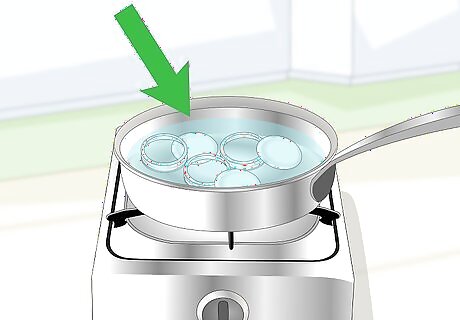
Warm the lids. You'll need three new canning lids and bands. Fill a small saucepan halfway with water and bring it to a boil. Turn the heat off and place the three lids into the pot. This will help the seals soften, so they securely fit onto the jars. Just leave the lids in the pan while you prepare the asparagus. You don't need to sterilize or warm the bands. You can keep them on your work space while you prepare the asparagus.
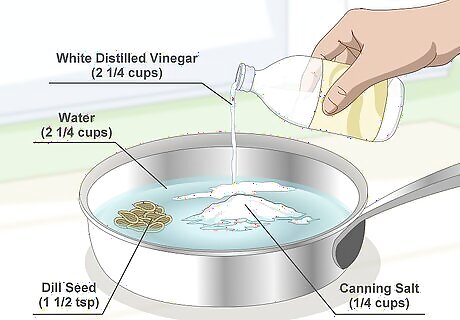
Combine the brine ingredients. Pour 2 1/4 cups (532 ml) of water and 2 1/4 cups (532 ml) of white distilled vinegar (5%) into a medium saucepan. Stir in 1/4 cup (68 g) of canning salt and 1 1/2 teaspoons of dill seed. It's important to use canning salt for pickling vegetables because other salts can make the brine cloudy.
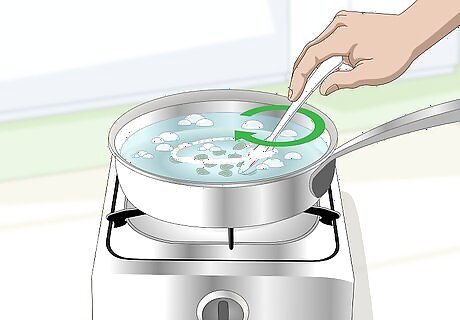
Boil the brine. Turn the heat on to high and stir the brine. Continue to heat the brine until it boils rapidly. This will help the canning salt dissolve. Turn the heat off and set the brine aside while you prepare the asparagus.
Filling the Jars With Asparagus
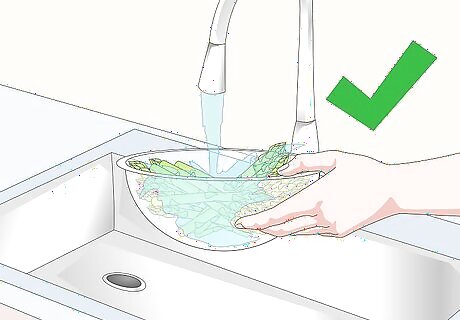
Wash and trim the asparagus. Run cold water and wash 5 pounds (2.27 kg) of asparagus under it.
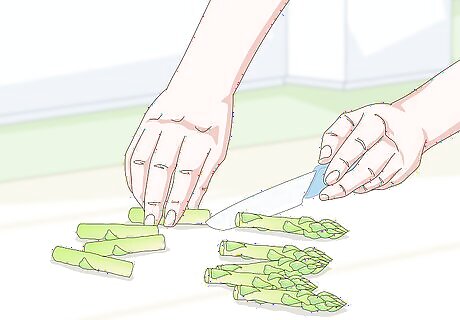
Cut the asparagus. Look at your pint jars and decide how you want to cut and pack the asparagus. You can trim them so they fit into the jars vertically or you can cut them into small pieces (about 1 1/2-inches or 3.8 cm) so you can just fill the jars. If you want to can them vertically, consider using tall and thin pint jars.
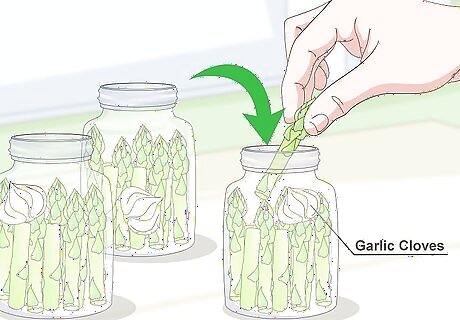
Fill the jars with asparagus and garlic cloves. Peel 3 large cloves of garlic and put one clove of garlic in the bottom of each clean, warm pint jar. Fill the pint jars with the trimmed asparagus, so the jars are well packed. For spicy pickled asparagus, you can add one small hot pepper to each pint jar along with the peeled garlic.
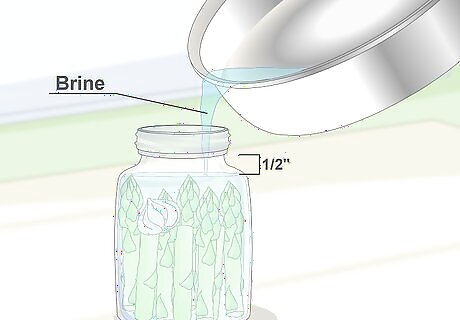
Fill the jars with the brine. Put on a pair of hot pads and carefully pour the hot brine over the asparagus in your pint jars. You'll need to leave 1/2-inch (1.3 cm) of headspace at the top of each jar. If you're worried you might spill or splash the brine as you pour, consider placing a funnel on the pint jar and ladling the brine into the jar. Fill the pint jars with the trimmed asparagus as described above so the jars are well packed..
Processing the Pickled Asparagus
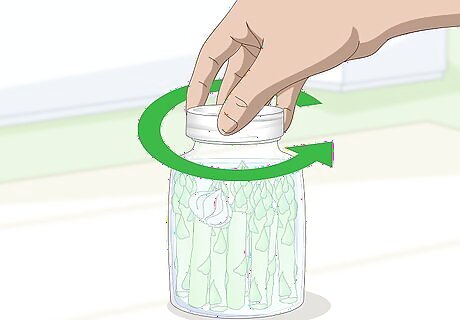
Check the jars and screw the lids on. Ensure that there aren't any air bubbles in the jars and wipe the rims of the jars with a clean, dry cloth. Lift the lids of the jars out of the warm water using tongs. Set a lid on each jar and screw a clean band onto each jar. You should screw them on until they're just finger tight. Avoid screwing the lid on very tightly since this could prevent air from escaping as the jars process.
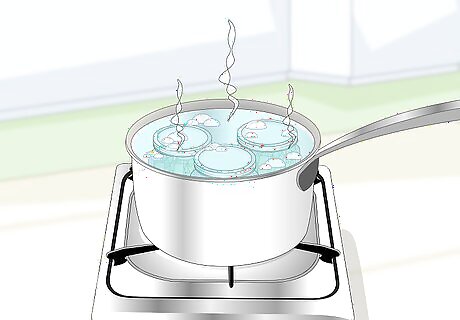
Boil the jars in a water bath. Once the jars are full of the pickled asparagus, the jars will be very hot. Place a wire rack in the bottom of your water bath canner and use a jar lifter to carefully lower each jar into it. Add enough water to the canner, so the jars are covered by an inch or two (2.5 to 5 cm) of water. Bring the water to a boil and start the processing timer.
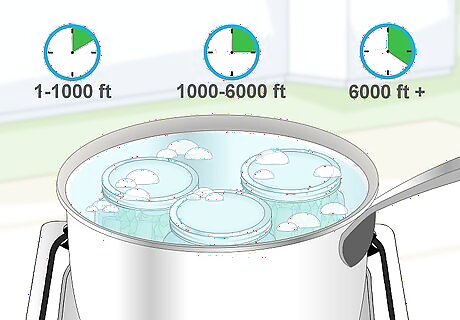
Boil the pickled asparagus for: 10 minutes at sea level to 1000 ft (300 m) 15 minutes at 1000 to 6000 ft (300 m to 1.8 km) 20 minutes at elevations over 6000 ft (1.8 km)
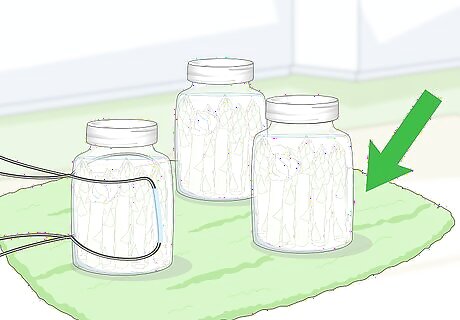
Cool the jars. Lay a clean, dry towel on your work surface and turn the heat off of the water canner. Use the jar lifter to lift the processed jars out of the canner and set them on the towel. Let the jars cool for 12 hours to 1 day. Avoid any shocks in temperature. For example, don't set the hot jars on the counter next to an open window that has cold air blowing in. This could cause the jars to crack.
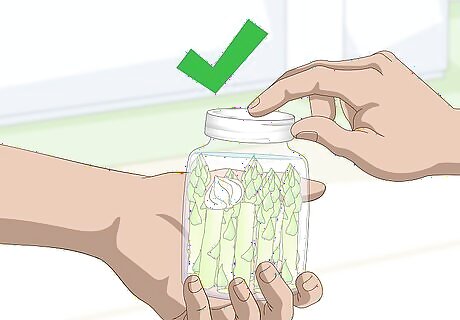
Check the seals. You should hear the seals pop as they seal to the jar. Pull on the seals to ensure they're securely fastened. You shouldn't be able to lift off the lid using just your fingertips. Always check your preserved food after storing it. Ensure that the seal is still good, that the brine isn't cloudy, and that the brine level hasn't dropped.




















Comments
0 comment